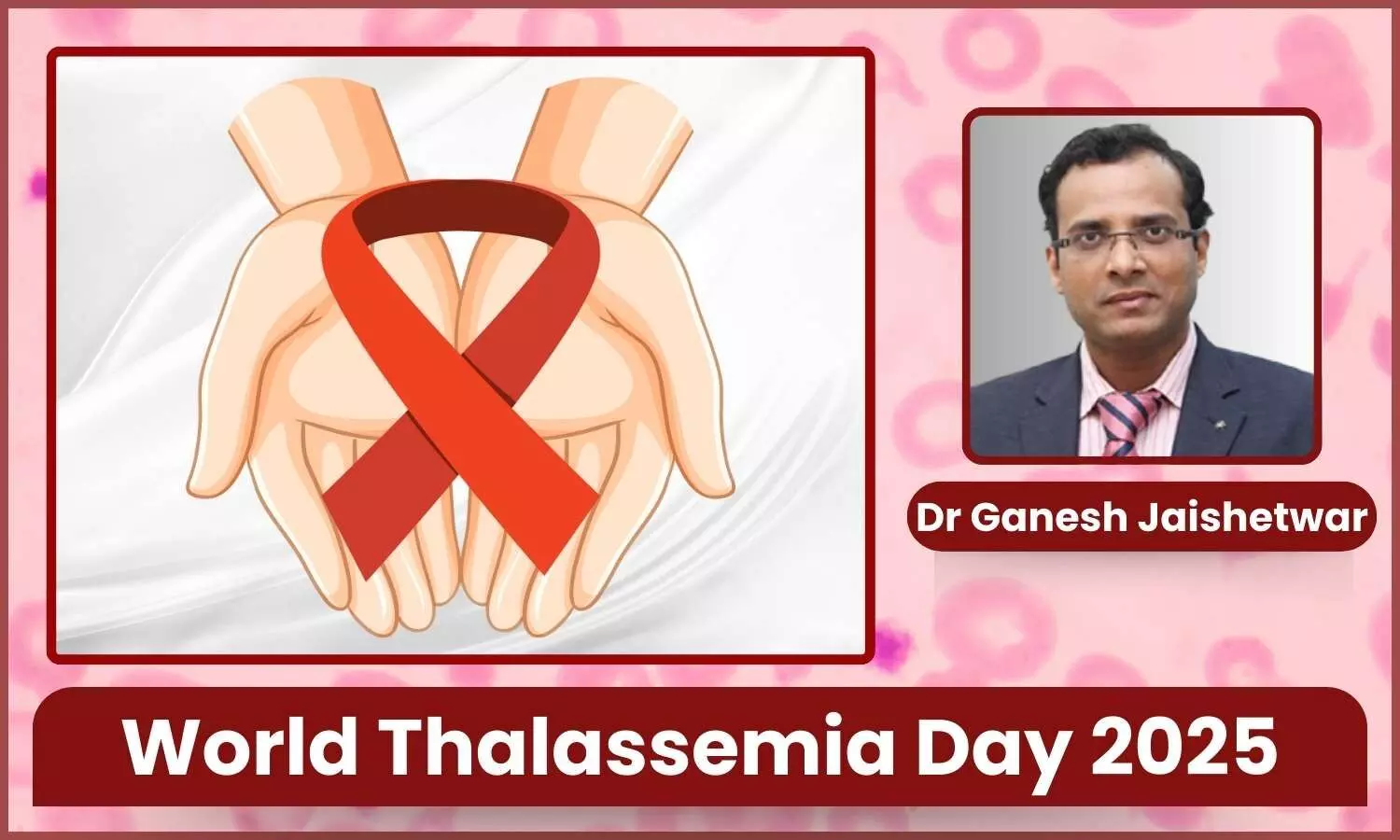How Can Carrier Awareness Stop Thalassemia Before It Starts?- Dr Ganesh Jaishetwar

Thalassemia is a serious but preventable genetic blood disorder that affects the body’s ability to produce normal haemoglobin. Prevention remains the most effective approach, and one of the most important tools in this effort is carrier screening.
A simple test can identify whether a person carries the gene for thalassemia or related haemoglobin disorders, and timely screening can stop the condition before it affects the next generation.
A person is considered a "carrier" if they inherit one normal gene and one mutated gene related to haemoglobin production. Carriers usually do not show symptoms, but if both partners in a couple are carriers of the same condition, there is a 25% chance with each pregnancy that their child will inherit the disorder.
Therefore, screening ideally should take place before conception. However, many couples only undergo testing during pregnancy, which can lead to emotional distress and limited decision-making time.
Carrier screening should be offered to individuals or couples from communities with a high prevalence of thalassemia or hemoglobinopathies.
In South Asia, particularly India, thalassemia is widespread due to diverse genetic patterns and high carrier rates. The most common types are alpha-thalassemia and beta-thalassemia, both of which result in microcytic anaemia and can vary in severity.
Initial testing includes a complete blood count (CBC) and either hemoglobin electrophoresis or high-performance liquid chromatography (HPLC) to detect abnormal hemoglobin variants and measure hemoglobin A2 and F levels.
If the CBC shows microcytosis (mean corpuscular volume <80 fL) or hypochromia (mean corpuscular hemoglobin <27 pg) with normal electrophoresis results, further testing such as brilliant cresyl blue staining to detect H bodies, and serum ferritin to rule out iron deficiency anaemia, should be done.
If a woman is identified as a carrier, her partner should also be tested. When both partners are found to be carriers, referral to a genetic counsellor is essential.
Counselling helps couples understand the implications, available diagnostic options, and their reproductive choices. Early identification allows for timely decisions and reduces the psychological stress of late discovery.
For high-risk couples, prenatal diagnosis is recommended. This involves analysing fetal DNA through chorionic villus sampling (CVS) in the first trimester or amniocentesis in the second trimester. These methods confirm whether the fetus has inherited the disorder.
If couples decline invasive testing, but are at risk for severe conditions like hemoglobin Bart’s hydrops fetalis (caused by the deletion of all four alpha genes), detailed fetal ultrasounds can help identify early signs, such as abnormal cardiothoracic ratio.
If abnormalities are detected, referral to a specialized centre is recommended for further evaluation.
For couples seeking alternatives to prenatal diagnosis, preimplantation genetic diagnosis (PGD) combined with in vitro fertilization (IVF) offers an option to select unaffected embryos before pregnancy.
PGD has been successfully used for conditions like sickle cell disease and beta-thalassemia, and can prevent the emotional and ethical challenges associated with pregnancy termination.
Importantly, many carriers of thalassemia may not be aware of their status until they undergo specific testing. Mild forms of the condition often go undiagnosed unless screening is done.
This is why routine screening in high-risk populations or before pregnancy planning is critical. It allows couples to explore options such as prenatal diagnosis, PGD, or early preparation for medical care.
Carrier screening involves a blood test and can be done in two ways:
- Haemoglobin electrophoresis – identifies different types of hemoglobin and detects abnormal variants.
- Molecular genetic testing – examines the DNA for specific mutations. This is often included in expanded carrier screening panels that test for multiple genetic conditions.
The benefit of early identification goes beyond prevention. Children born with thalassemia major often require lifelong blood transfusions and iron chelation therapy, which can be physically, emotionally, and financially challenging.
Early detection enables families to connect with specialized care teams and receive timely interventions that can significantly improve the child’s quality of life.
Ultimately, awareness is the first step in prevention. Thalassemia is not just a medical issue, but it’s a social and public health concern.
Widespread awareness, proactive screening, and accessible counselling services can empower individuals to make informed reproductive choices. With these measures, we can reduce the burden of thalassemia and ensure that more children are born free of this life-limiting.


